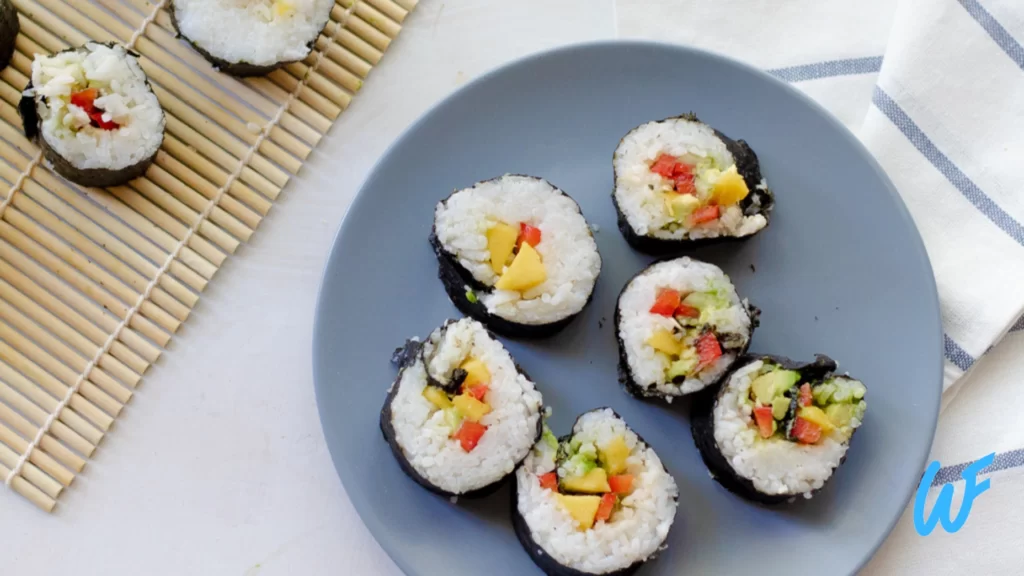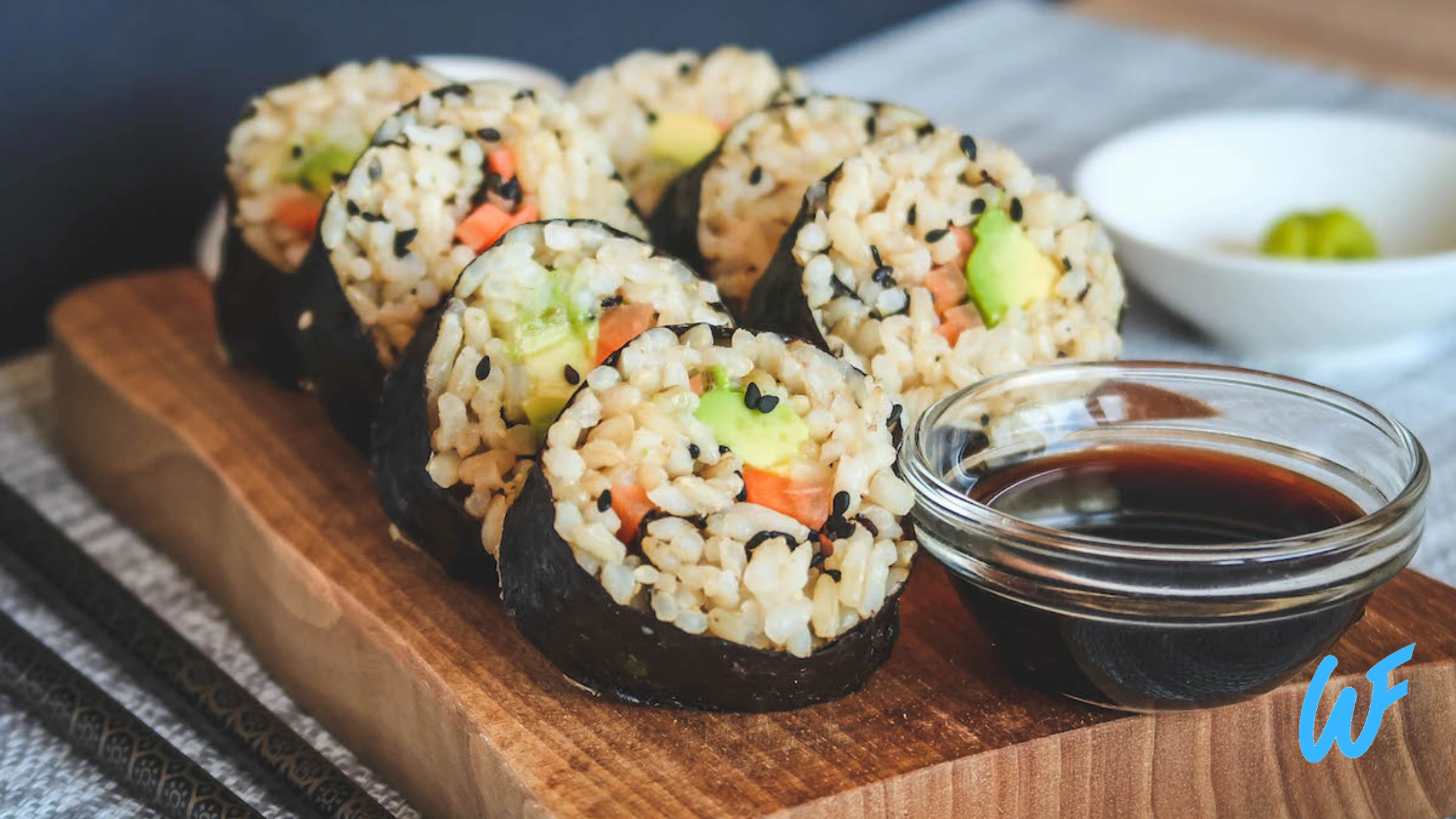
GIUTAN-FREE SUSHI RECIPE
Gluten-Free Sushi can be a healthy and delicious option for weight loss. By using gluten-free ingredients and incorporating nutrient-rich fillings, you can enjoy a satisfying meal while adhering to your dietary needs.
INGREDIENTS
- 2 cups sushi rice
- 4 cups water
- 1/4 cup rice vinegar
- 1 tablespoon sugar
- 1 teaspoon salt
- Nori sheets (seaweed sheets)
- Assorted fillings (such as avocado, cucumber, carrots, bell peppers, cooked shrimp, or cooked fish)
- Soy sauce or gluten-free tamari, for dipping
- Wasabi and pickled ginger, for serving (optional)
INSTRUCTIONS
Rinse the sushi rice under cold water until the water runs clear. This helps remove excess starch.
In a saucepan, combine the rinsed sushi rice and water. Bring to a boil, then reduce the heat to low, cover, and simmer for about 15-20 minutes or until the rice is cooked and tender.
In a small bowl, combine the rice vinegar, sugar, and salt. Heat the mixture in the microwave for a few seconds to dissolve the sugar.
Transfer the cooked rice to a large bowl. Gradually pour the vinegar mixture over the rice while gently folding it with a spatula or wooden spoon. Continue folding until the rice is evenly coated with the vinegar mixture and reaches room temperature.
Prepare your fillings by slicing the avocado, cucumber, carrots, bell peppers, or any other desired ingredients into thin strips.
Place a bamboo sushi mat on a clean surface. Lay a sheet of nori on the mat, shiny side down.
Wet your hands with water to prevent sticking. Take a handful of sushi rice and spread it evenly over the nori, leaving a 1-inch border at the top edge.
Arrange your desired fillings in a horizontal line across the center of the rice.
Using the bamboo mat, carefully roll the sushi tightly from the bottom, applying gentle pressure to secure the fillings. Wet the top border of the nori with water to seal the roll.
Repeat the process with the remaining ingredients to make additional sushi rolls.
Using a sharp knife, slice the sushi rolls into bite-sized pieces.
Serve the gluten-free sushi with soy sauce or gluten-free tamari for dipping. You can also serve it with wasabi and pickled ginger, if desired.
TIPS
Use high-quality ingredients: Choose fresh and high-quality ingredients for your sushi fillings. Opt for organic and locally sourced produce whenever possible.
Portion control: Sushi can be calorie-dense, so be mindful of portion sizes. Enjoy a moderate serving and pair it with a side of mixed greens or a light soup to create a balanced meal.
Experiment with fillings: Get creative with your sushi fillings. Incorporate a variety of colorful vegetables, lean protein sources like cooked shrimp or fish, or even vegetarian options like marinated tofu or tempeh.
Practice proper rolling technique: Rolling sushi takes practice, so don’t get discouraged if your first few attempts are not perfect. With time, you’ll improve your rolling technique and achieve tighter rolls.
Store leftovers correctly: If you have leftovers, wrap them tightly in plastic wrap or store them in an airtight container in the refrigerator. Consume them within 24 hours for the best taste and texture.
NUTRITION VALUE
- Calories: Approximately 150-200 calories (depending on the portion size and ingredients used)
- Carbohydrates: 30-40 grams
- Protein: 4-6 grams
- Fat: 1-2 grams
- Fiber: 2-3 grams














